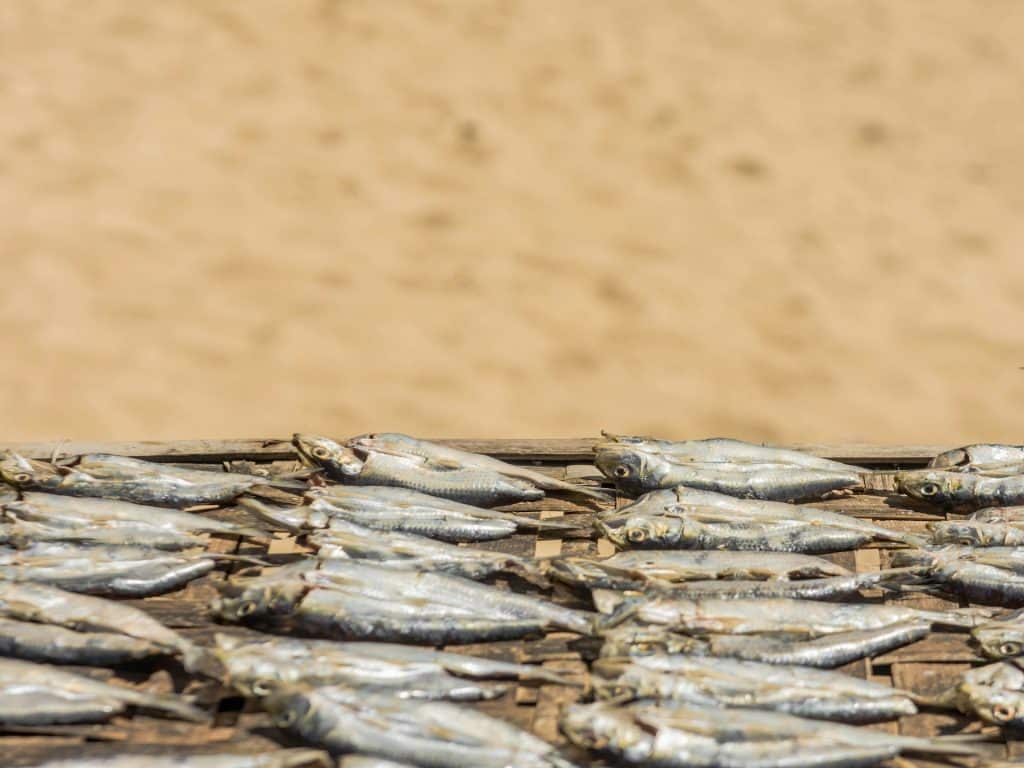
It does not provide energy, but like the rest of the vitamins, without it we would not be able to take advantage of many of the nutrients that enter our body. Optimal levels of vitamin D are crucial for our health, especially that of our bones. So much so that its deficit can seriously compromise it.
There are many clinical studies that have linked a lack of this vitamin with autoimmune diseases, metabolic disorders or cardiovascular diseases. Therefore, it does not hurt to follow the recommendations that experts give us to prevent a vitamin D deficiency and its possible consequences.
What is vitamin D and what is it for?
Vitamin D or ‘sunshine vitamin’, as it is popularly known, is a fat-soluble vitamin that behaves like a hormone and fulfills various and important functions in the body. “Although it has many functions at the muscular, nervous and endocrine level, the main function is related to bone metabolism. Its main action is to increase the intestinal absorption of calcium and phosphorus,” explains dietitian-nutritionist, Iva Marques, professor of nutrition and food science at the Faculty of Health and Sports Sciences of the University of Zaragoza.
Helping the intestine absorb the calcium we ingest is, without a doubt, the most studied and important function of all that this vitamin has. Adequate levels of vitamin D in the blood will help us gain bone mass in childhood (it has an important role in preventing rickets). Later, in adulthood, she contributes to mitigate bone loss which normally occurs with aging and results in osteoporosis and an increased risk of fractures.

This is how vitamin D works
The expert explains in detail how vitamin D works at the intestinal level. “This vitamin stimulates calcium channels in enterocytes (which are the most abundant cells in the small intestine and those responsible for the absorption of nutrients). In addition, it induces the expression (the amount) of calcium transport proteins, whose function is the passage of calcium through the enterocyte. Finally, facilitate the entry of calcium into the blood circulation.”
Table of foods with vitamin D
80-90% of vitamin D is obtained by exposing ourselves to the sun. To achieve adequate levels of vitamin D in the blood and safely, without increasing the risk of developing skin cancer, just a 15 minute sun exposure 3 days a week, from May to October in a latitude like Spain. We can obtain the rest through diet.
The problem is that it is not easy to find foods high in vitamin D that help us reach the recommended daily intake. “Of all of them, those that stand out the most for their amount of vitamin D are fatty fish, such as tuna, sardines and anchovies, salmon, or cod,” says Iva Marques.
| Vitamin D content in the different food groups | |
| Food group | vitamin d is µg (micrograms) per 100 grams of edible portion |
| whole yogurt | 0.08 |
| whole milk | 0.1 |
| semi-skimmed milk | 0.02 |
| Ice creams | 0.1 |
| cream | 0.28 |
| fresh cheese | 0.1 |
| cured cheese | 0.9 |
| whole yogurt | 0.08 |
| nonfat yogurt | 0.01 |
| Pork, lamb and beef | Traces |
| rabbit and chicken | Traces |
| Sausages (chorizo, sausage loin, york ham, mortadella…) | Traces |
| Tuna | 25 |
| anchovies | 7 |
| Salmon | 8 |
| sardine | 7.9 |
| Cod, sea bream, sole, hake, whiting, trout | Traces |
| canned fish | twenty |
| eggs | 1.75 |
| Unenriched breakfast cereals | 0 |
| Italian pasta | 0 |
| legumes | 0 |
| rice | 0 |
| Cake shop | 2-2.8 |
| fruit | 0 |
| Mushrooms and mushrooms not exposed to sunlight. | 0.2-0.4 |
| vegetable oils | 0 |
| butter | 0.7 |
| enriched margarine | 7.94 |
| mayonnaise | 0.33 |
| Cod liver oil | 210 |
| Sources: Mataix J. Food composition table. Ed. University of Granada; 2003. p. 67-362. and BEDCA. | |

What type of milk has the most vitamin D?
Sheep’s milk has the highest amount of vitamin D (0.18 micrograms per 100 grams of food), followed by goat’s milk (0.06 micrograms) and, finally, cow’s milk (0. 03 micrograms). Dairy products are an important source of this vitamin, but as recommended by a report carried out by the José Mataix Institute of Nutrition and Food Technology at the University of Granada, you can use dairy products without problem. dairy enriched with vitamin D. These foods can be very useful to reach the recommended daily intake, which the EFSA and AESAN place at 15 micrograms day.
“In the market you can find enriched cow’s milk and some of the vegetable drinks fortified with vitamin D3 (cholecalciferol). For example, a 200 milliliter glass of fortified milk goes from having 0.2 micrograms of vitamin to have between 1.5 and 3.0 micrograms of vitamin, depending on the brand.”
Mushrooms, fungi and mushrooms, the vegetables with the most vitamin D
There are two forms of vitamin D: D2 or ergosterol, which is found in vegetables and in low concentration, and D3 or cholecalciferol, present in foods of animal origin with high fat content. is It is difficult to find significant amounts of this vitamin in fruits and vegetables.except for mushrooms and mushrooms, especially if they have been exposed to ultraviolet light.
These are the vegetables with the most vitamin D and without a doubt a good option for people who follow a vegetarian or vegan diet. We must not lose sight of the fact that nuts, which usually form an important part of the diet of those people who do not consume products of animal origin, do not contain vitamin D.
There is also no vitamin D in aromatic herbs, nor in infusions.
How and when to take vitamin D supplements?
Half of the world’s population has a deficiency of this vitamin, something that paradoxically also happens in a country with many hours of sunshine like Spain. Many people, faced with the difficulty of achieving adequate blood levels of this vitamin, resort to supplementation. But this is something that, without specialist supervision, is totally contraindicated. “Supplementation should be done when Serum values are below 20 ng/ml.. The first thing is to go to the doctor to perform an analysis. Depending on the values and the existence of deficiency or insufficiency, the doctor can prescribe supplementation until the appropriate levels are reached,” details Iva Marques.
The dietician-nutritionist can also prescribe vitamin D, always below 100 micrograms per day, which is the maximum tolerable intake. “You must always do it with the help of the doctor to access the evolution of the analysis values and for him to be knowledgeable about the prescribed products. Although until now the risk of toxicity has been considered low, much progress is being made in numerous research on vitamin D and it is known that it affects many reactions in the body. For this reason the Taking this vitamin should be gradual and always controlled by a health professional.”, concludes the expert.
The ALDI Council
Sun exposure is our main source of vitamin D. However, it is important to take precautions to avoid sunburn and long-term damage to the skin, such as not exposing yourself during the central hours of the day and using sunscreen if we are going to be . more than 20 minutes in the sun.

Iva Marquis. Patron of the Spanish Academy of Nutrition and Dietetics. Graduate in Nutrition and doctor in Pharmacy. Professor of Nutrition and Bromatology at the Faculty of Health and Sports Sciences of the University of Zaragoza. She is a researcher at the IA2 Agri-Food Institute of Aragon, forming part of the Research Group “Analysis and evaluation of food safety”. Director of the University Expert Degree “Nutrition and feeding of vegetarian and vegan children” at the University of Zaragoza. She has been Editor-in-Chief of the Spanish Journal of Human Nutrition and Dietetics, as well as President of the Spanish Conference of Deans and Directors of Centers that teach the degree in Human Nutrition and Dietetics. She is currently Patron and Honorary Academician of the Spanish Academy of Nutrition and Dietetics, member of the Portuguese Agency for Evaluation and Accreditation of Higher Education A3ES and of the Scientific Committee of the Association «5 a day». Facebook: @iva.marqueslopes.







